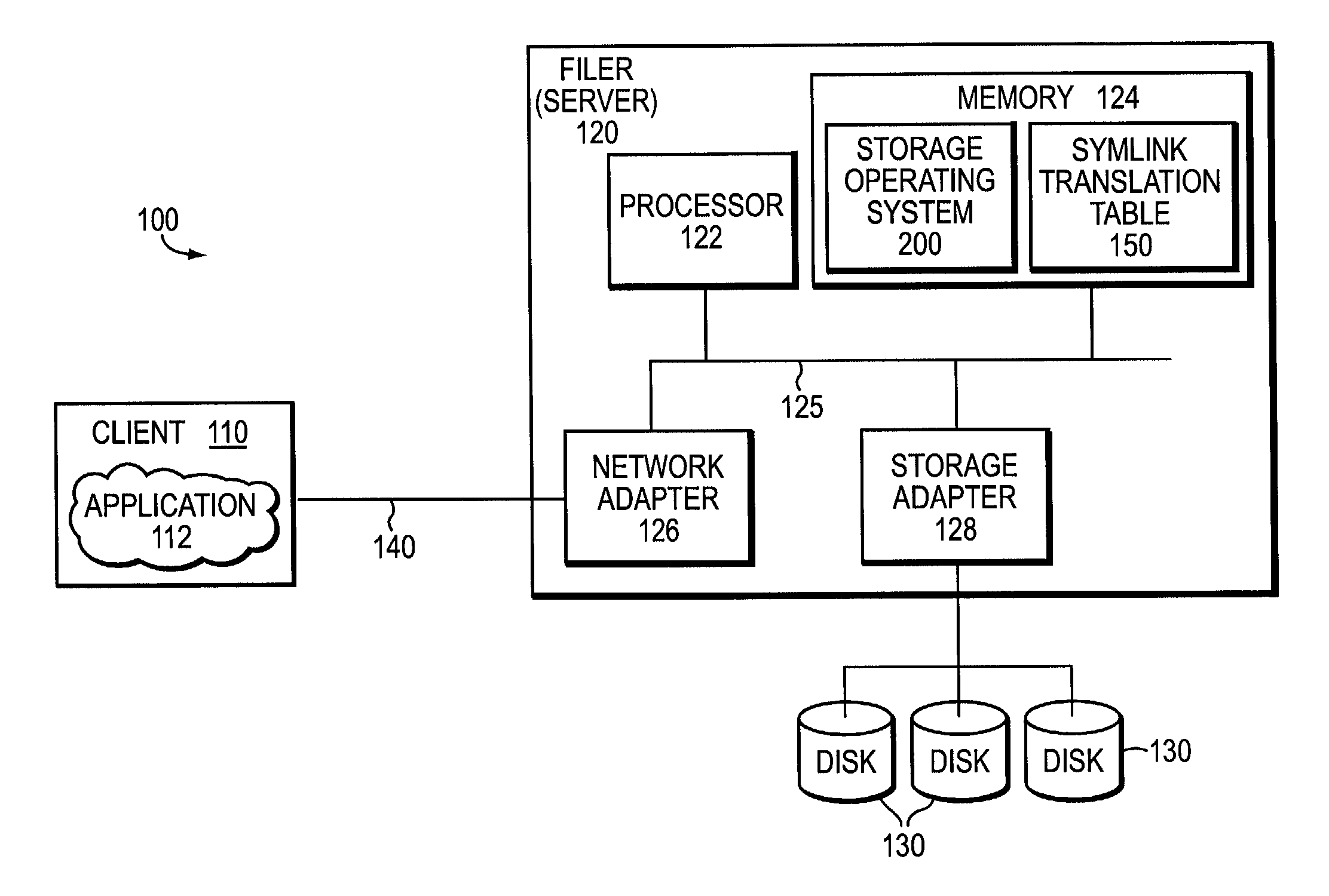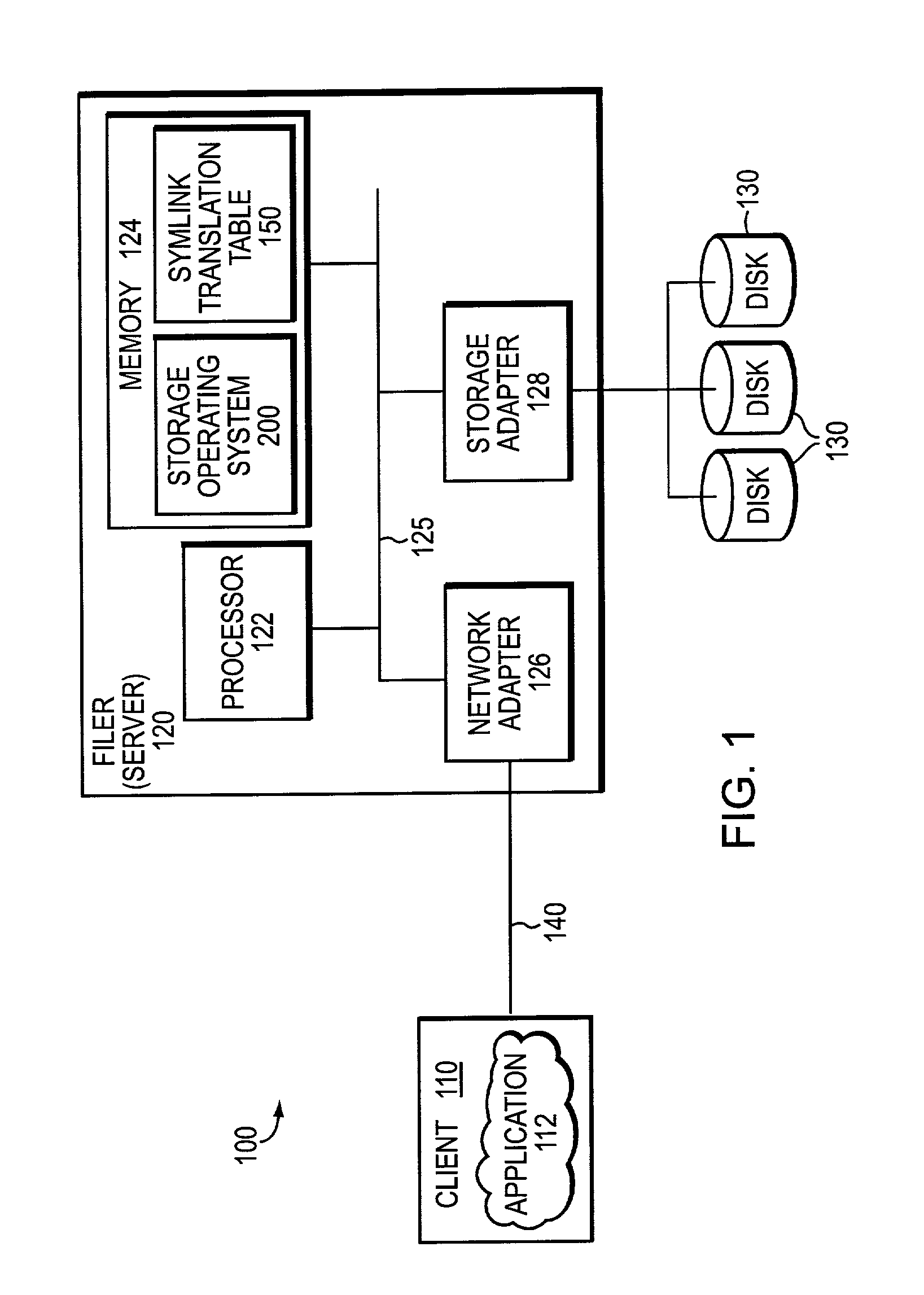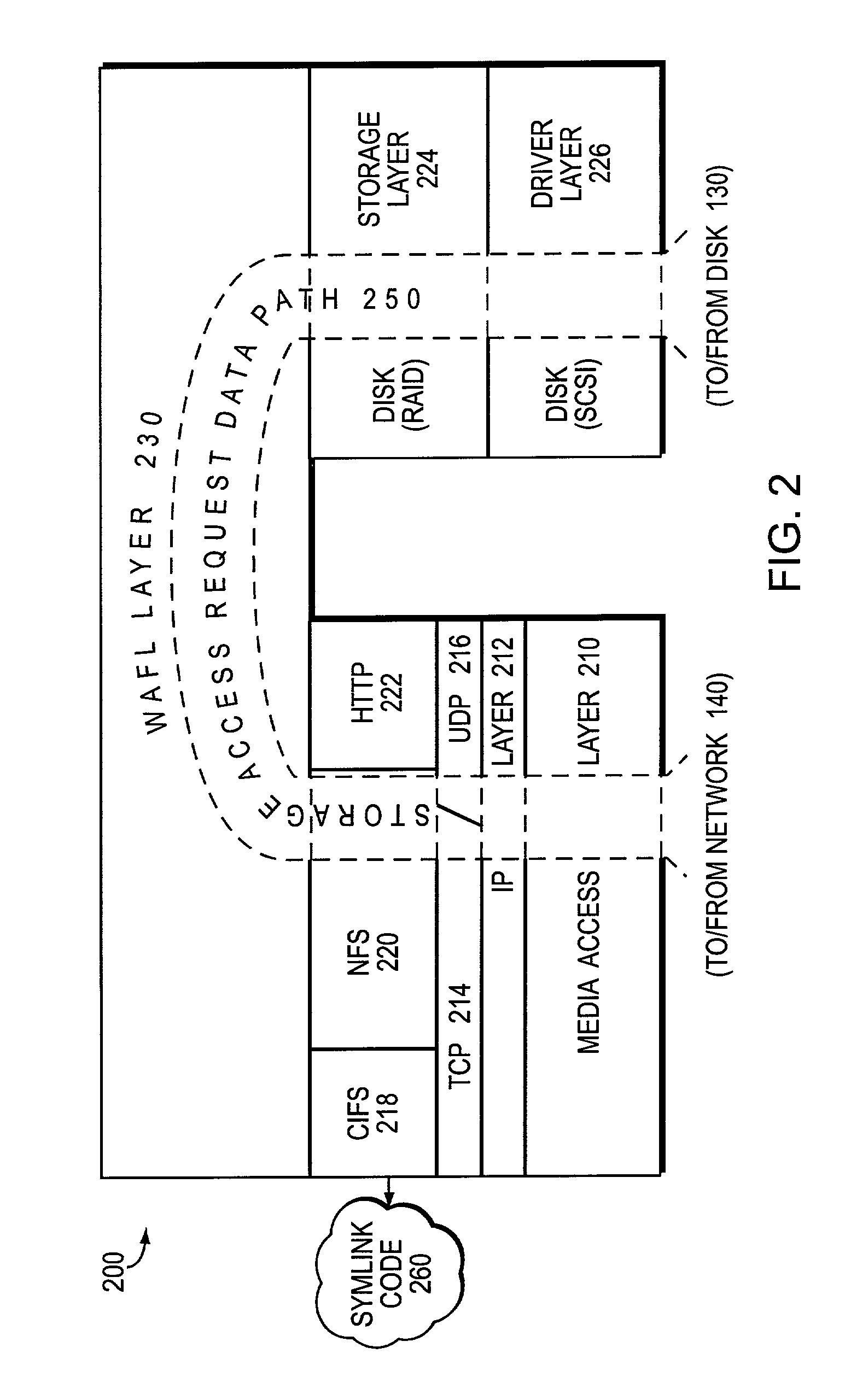Technique to enable support for symbolic link access by windows clients
a symbolic link and client technology, applied in the field of storage systems, can solve the problems of imposing substantial additional overhead, undefined symlink creation in windows environment, and unsatisfactory samba solutions
- Summary
- Abstract
- Description
- Claims
- Application Information
AI Technical Summary
Benefits of technology
Problems solved by technology
Method used
Image
Examples
Embodiment Construction
[0030]FIG. 1 is a schematic block diagram of a network environment 100 including a file server, such as a network storage appliance, that may be advantageously used with the present invention. The file server or filer 120 is a computer that provides file service relating to the organization of information on storage devices, such as disks 130. The filer 120 comprises a processor 122, a memory 124, a network adapter 126 and a storage adapter 128 interconnected by a system bus 125, e.g., a conventional peripheral computer interconnect (PCI) bus 210. The filer 120 also includes a storage operating system 200 that implements a file system to logically organize the information as a hierarchical structure of directories and files on the disks 130 coupled to the storage adapter 128. In the illustrative embodiment described herein, the operating system 200 is preferably the NetApp® Data ONTAP™ operating system available from Network Appliance, Inc. that implements a Write Anywhere File Layo...
PUM
 Login to View More
Login to View More Abstract
Description
Claims
Application Information
 Login to View More
Login to View More - R&D
- Intellectual Property
- Life Sciences
- Materials
- Tech Scout
- Unparalleled Data Quality
- Higher Quality Content
- 60% Fewer Hallucinations
Browse by: Latest US Patents, China's latest patents, Technical Efficacy Thesaurus, Application Domain, Technology Topic, Popular Technical Reports.
© 2025 PatSnap. All rights reserved.Legal|Privacy policy|Modern Slavery Act Transparency Statement|Sitemap|About US| Contact US: help@patsnap.com



